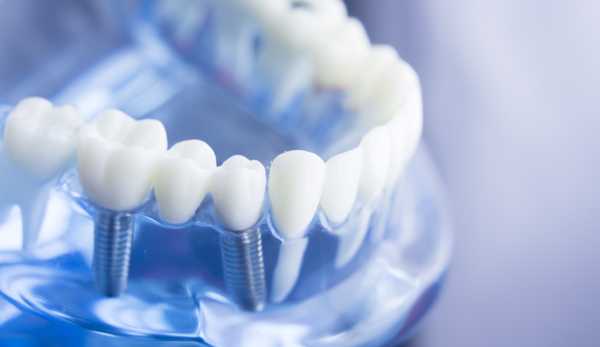樹木葬の費用を徹底比較!安く安心できる自然葬の選び方
Differentiating Crohn’s Disease: A Comprehensive Diagnostic Approach
Crohn's disease (CD) is a chronic inflammatory condition that can affect any part of the gastrointestinal (GI) tract, often causing symptoms like abdominal pain, diarrhea, fatigue, and weight loss.
Crohn's disease (CD) is a chronic inflammatory condition that can affect any part of the gastrointestinal (GI) tract, often causing symptoms like abdominal pain, diarrhea, fatigue, and weight loss.
Given the overlap in symptoms with several other gastrointestinal disorders, diagnosing Crohn's disease can be a challenge. This article provides an in-depth overview of the conditions that should be considered in the differential diagnosis of Crohn's disease, highlighting key diagnostic strategies and tools.

1. What is Crohn's Disease?
Crohn’s disease is a type of inflammatory bowel disease (IBD) characterized by inflammation that extends through all layers of the bowel wall. This condition can occur anywhere in the GI tract but most commonly affects the terminal ileum and the colon. The hallmark of Crohn’s disease is its chronic, relapsing nature, which leads to complications such as strictures, abscesses, and fistulas.
Common Symptoms of Crohn’s Disease:
- Abdominal pain, often in the lower right quadrant
- Chronic diarrhea, sometimes with blood
- Unexplained weight loss
- Fatigueand malaise
- Feverand low-grade inflammation
- Nutrient deficienciesdue to malabsorption
Given the range of overlapping symptoms, several other conditions can mimic Crohn’s disease, making accurate diagnosis critical.
2. Key Conditions to Consider in the Differential Diagnosis
a. Ulcerative Colitis (UC)
Ulcerative colitis, another form of IBD, affects only the colon and rectum, unlike Crohn's disease, which can affect any part of the GI tract.
- Location: UC is confined to the colon, while Crohn’s disease can involve the entire GI tract, including the mouth, esophagus, and small intestine.
- Inflammation Pattern: UC causes continuous inflammation, while Crohn’s disease shows "skip lesions" (patchy, isolated areas of inflammation).
- Histological Features: UC affects only the mucosal layer, while Crohn’s disease involves all layers of the bowel wall.
b. Infectious Gastroenteritis
Infectious causes like bacterial gastroenteritis from pathogens such as Salmonella, Shigella, or Campylobacter can result in symptoms like abdominal pain and diarrhea.
- Duration of Symptoms: Gastroenteritis usually resolves within days to weeks, while Crohn's disease is chronic.
- Fever: Infection typically causes higher fevers, while Crohn's disease tends to cause low-grade fevers.
- Stool Cultures: Stool testing can confirm the presence of pathogens, helping differentiate infections from IBD.
c. Irritable Bowel Syndrome (IBS)
IBS is a functional GI disorder that shares some symptoms with Crohn's disease, such as abdominal pain and altered bowel habits, but it does not involve inflammation.
- No Inflammation: Unlike Crohn’s, IBS does not cause inflammation or damage to the intestinal lining.
- Blood in Stool: Crohn’s disease commonly causes blood in the stool, while IBS does not.
- Endoscopy Results: IBS shows no abnormal findings on colonoscopy, while Crohn's disease often shows visible inflammation, ulcers, or narrowing.
d. Celiac Disease
Celiac disease is an autoimmune disorder triggered by gluten that can cause symptoms like diarrhea, weight loss, and fatigue, which overlap with Crohn’s disease.
- Trigger: Celiac disease is triggered specifically by gluten, whereas Crohn’s disease is not related to diet.
- Histological Findings: Celiac disease leads to villous atrophy in the small intestine, while Crohn’s disease causes transmural inflammation.
- Serological Tests: Blood tests for anti-tissue transglutaminase (tTG) antibodies help confirm celiac disease.
e. Gastrointestinal Tuberculosis (GI TB)
Gastrointestinal tuberculosis can resemble Crohn's disease, particularly in regions with a high prevalence of tuberculosis.
- History of TB Exposure: A history of tuberculosis or living in high-prevalence areas raises suspicion for GI TB.
- Imaging: GI TB often shows strictures and ulcerations in the ileum, similar to Crohn’s, but it typically affects a more localized segment.
- Histology: Biopsy in GI TB may reveal granulomas with acid-fast bacilli, which is different from the granulomas seen in Crohn’s disease.
- Response to Treatment: A positive response to antituberculous therapy is a strong indicator of GI TB.
f. Diverticulitis
Diverticulitis is the inflammation of the diverticula in the colon, which can lead to symptoms similar to Crohn’s disease, such as abdominal pain and fever.
- Location: Diverticulitis primarily affects the sigmoid colon, while Crohn’s disease can affect any part of the GI tract.
- Imaging: CT scans can differentiate diverticulitis from Crohn’s by identifying localized inflammation near the diverticula.
- Histology: Diverticulitis does not cause transmural inflammation or granulomas, unlike Crohn’s.
g. Colorectal Cancer (CRC)
Colorectal cancer can cause symptoms such as weight loss, blood in the stool, and changes in bowel habits, which overlap with Crohn’s disease, especially in older adults.
- Age: Colorectal cancer is more common in individuals over the age of 50, while Crohn’s disease typically presents in younger adults.
- Blood in Stool: Cancer often presents with occult blood, whereas Crohn’s disease may cause more overt blood in the stool.
- Imaging: Colonoscopy reveals masses or tumors in colorectal cancer, while Crohn’s disease is marked by areas of inflammation, strictures, or fistulas.
h. Mesenteric Ischemia
Mesenteric ischemia occurs when there is a reduced blood supply to the intestines, leading to pain and dysfunction that can mimic Crohn’s disease.
- Pain: Mesenteric ischemia often causes pain that is disproportionate to the physical findings, whereas Crohn’s disease pain is typically localized and related to the affected bowel.
- Imaging: CT or MRI angiography can reveal vascular occlusion or reduced blood flow, helping to differentiate mesenteric ischemia from Crohn’s disease.
3. Diagnostic Approach
Diagnosing Crohn’s disease and distinguishing it from other conditions requires a comprehensive evaluation involving several diagnostic methods.
a. Clinical History and Physical Exam
A detailed patient history is essential in the diagnostic process. Clinicians should ask about:
- Family history of inflammatory bowel disease
- Recent infections, travel history, or exposure to TB
- Prior surgeries or autoimmune conditions
b. Laboratory Tests
- C-Reactive Protein (CRP)and Erythrocyte Sedimentation Rate (ESR): Elevated CRP and ESR indicate active inflammation, which can suggest Crohn’s disease.
- Fecal Calprotectin: An elevated fecal calprotectin level can distinguish inflammatory conditions like Crohn's from non-inflammatory conditions such as IBS.
- Blood Tests: Anemia and electrolyte imbalances can indicate malabsorption or active disease.
c. Imaging Techniques
- CT/MRI Enterography: These imaging modalities provide detailed images of the small intestine and can identify features such as strictures, abscesses, or fistulas.
- Ultrasound: Useful for assessing pediatric patients or minimizing radiation exposure, ultrasound can also detect signs of inflammation.
- Colonoscopy: Colonoscopy allows direct visualization of the colon and enables biopsy for histological examination. Granulomas found on biopsy are characteristic of Crohn's disease.
d. Endoscopic Procedures
- Capsule Endoscopy: A non-invasive tool for visualizing the small intestine, capsule endoscopy is particularly useful when the ileum or jejunum is suspected to be affected by Crohn’s disease.
Conclusion
The differential diagnosis of Crohn's disease is broad, with many conditions presenting with similar symptoms. Careful clinical evaluation, laboratory testing, imaging, and endoscopic procedures are crucial in accurately diagnosing Crohn's disease and distinguishing it from other gastrointestinal disorders. By considering the full range of potential diagnoses, clinicians can tailor their approach to treatment, ensuring better patient outcomes and more effective management of the disease.











